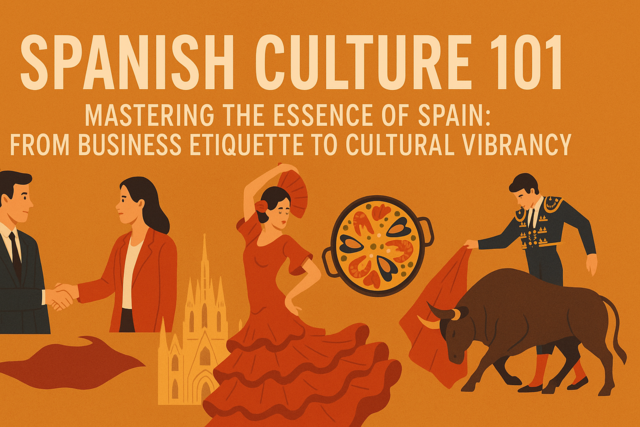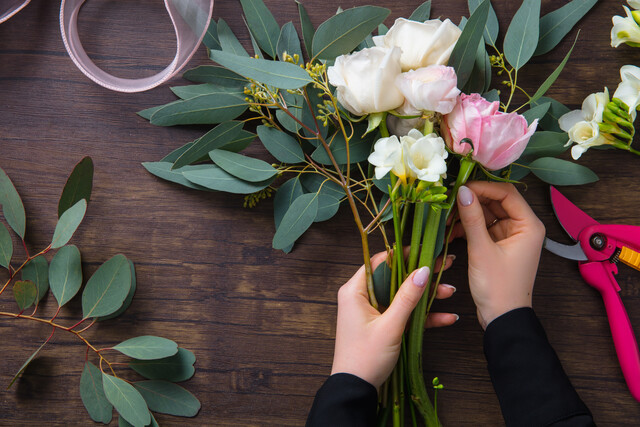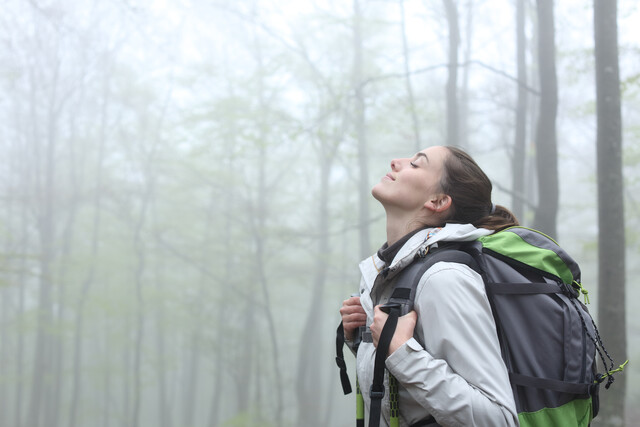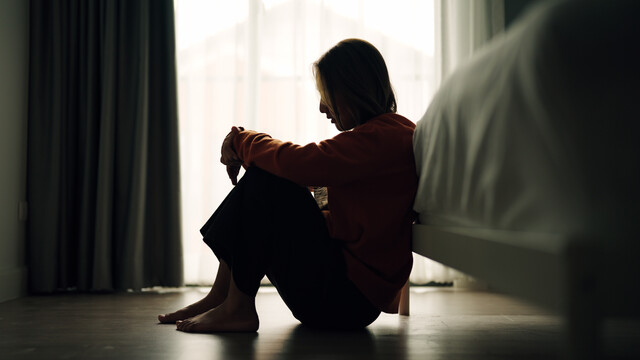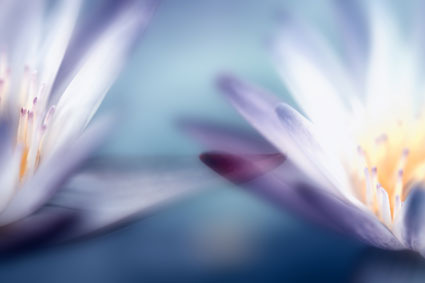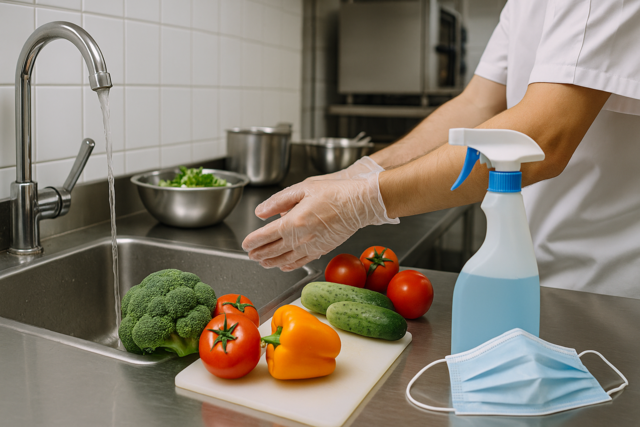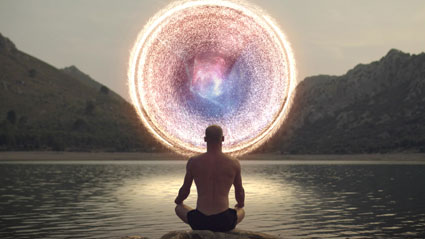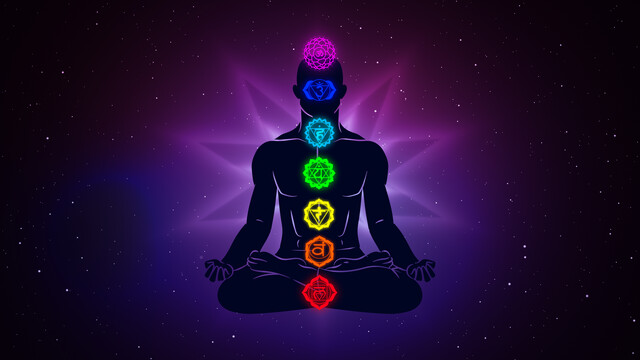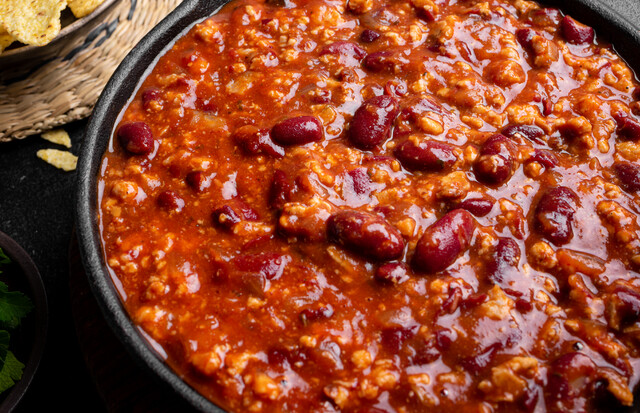Ancient Egyptians were also very careful to use oils for skin care, a very important practice given the hot, dry climate of their environment. Such oils were liberally spread over the skin and in the hair on an almost daily basis.
Egyptians appear to have worn their hair long and thick, but many people don't know that Egyptian women often shaved their entire bodies to prevent lice infestations. Ancient Egyptians also used henna to mask graying hair. As a matter of fact, it is known today that the Egyptians dabbled with a wide number of ways to stimulate hair growth in men. In fact, many men applied fats from various animals to their scalps, including the fat of crocodiles, goats, and lions in an effort to ward off baldness. Rosemary oil, castor oil, and almond oil were also used to increase hair growth.
Greek women used such oils and products to also create skin care creams and perfumes. With these natural ingredients, they created products that not only smelled good, but also were good for their skin.
Of all the beauty aids used by ancient Indians, sandalwood is the most important. Sandalwood has been used for thousands of years as a base to create medicines and creams. Two basic kinds of sandalwood used in Indian skin care treatments are white sandal, used for makeup and skin care needs, while red sandal was also popular and is used for both medicine and skin care needs. Sandalwood was used to both clean and condition the skin. Today, sandalwood has been proven to moisturize and protect the skin, not only from the harmful rays of sunshine, but as a protection against germs.
Ancient Indians developed a recipe for a skin paste to treat acne by using small portions of sandalwood powder mixed with a portion of turmeric. This paste was applied to the skin before bed and left on all night. For a cooling effect in warmer or humid weather, camphor was added to the paste. This paste reduced pimples without scarring in a short period of time.
Indians were very creative with their skin care products. They may be the first to have created the use of the skin mask to treat acne. Sandalwood powder and rosewater creams were spread on their faces and left it on for about 30 minutes. This paste was also used on their torsos, providing relief from heat rashes.
Ancient Indian beliefs and philosophy taught that living a harmonious lifestyle that blended body massages and yoga routines to enhance health, strength and youthfulness. Other creations using a combination of plants and herbs produced beauty products and healing potions. These ingredients were designed to balance the skin and scalp at the cellular level and prevent dehydration and aging affects of old and dying skin cells.
Today, everyone knows that stress accelerates the aging process. Of all ancient cultures, the Indian culture seems to have realized the connection between inner body health and outward appearance and as a result, created more products and treatments for a variety of health condition issues.
The ancient Indians were fans of mud treatments, something women today spend hundreds of dollars a year to experience. Such skin rejuvenation treatments, combined with massage still helps to invigorate skin cells for a healthy and refreshed and youthful looking appearance.
This ancient culture also created herbal bathing solutions using floral, herbal, and milk products to lubricate the skin without clogging pores. Steam treatments combining the effects of sesame oil and herbs eliminated harmful toxins from the skin. These days, the mixtures that ancient Indians have been giving themselves for thousands of years are called an aromatherapy steam.
Introduction
These radicals go through a chemical process called oxidation , in which they damage or alter our DNA, creating physical changes that deteriorate our mind and body. Oxidation is one of the main processes responsible for the most significant symptoms of aging and degeneration.
How does the oxidation process occur? Throughout life, the body is constantly regenerating cells. Our bodies even produce free radicals of its own. However, when the body produces too many of these free radicals, cancers or life-threatening diseases are formed as a result of cellular DNA mutations.
The good news is that a healthy body also produces antioxidants, which work in neutralizing the free radicals that can harm our health and physical wellbeing.
Antioxidants work throughout the body to protect DNA, organs and tissues from damage. As our body ages, the production of these valuable antioxidants decrease, setting the stage for many of those diseases found in older people.
Free radicals are also found in daily exposure to the environment. Ultraviolet radiation from the sun, industrial pollution and crowded environmental living conditions all play a role in subjecting our bodies to damaging aging processes. These same conditions have deteriorated the Earth's ozone layer, which is responsible for protecting us from harmful UV rays and sun exposure that increases cancer risk.
Protection from the sun is not enough to prevent free radicals from damaging the body, since day-to-day living with pollution forces us to breathe in many harmful radicals that damage our cells at the molecular level. Even though cigarette smoke is dangerous and many individuals succumb to both first-hand and secondhand smoking, breathing in the pollution caused by transportation or industrial plants creates as much damage to the health of people around the world.
Different foods are rich in antioxidants, and work hard to reduce or neutralize the impact external free radicals has on the body. Aside from the usefulness in protection that antioxidants provide for the body, the need for them as well as essential fatty acids increases, as the body grows older.
Supplements may be a good idea to increase the protection from free radicals and oxidation, but taking too many of them can be just as harmful for the body. Maintaining a healthy diet is one of the best ways to protect the organs from "supplement overload", and as a whole, will provide optimal benefits through the combining action and absorption of other vitamins and minerals.
Supplements have been known to interact negatively with many over-the-counter and prescription medications, as well as cause negative interactions with particular foods, so always know what you're taking and how it behaves with other foods in your diet plan. Ask your doctor or a dietician to help explain these issues.
Some antioxidant supplements include grape seed extract, garlic pills, and fish oils, which are mostly found around other vitamins and minerals. Green tea extract is one of the best antioxidants because it contains polyphenols and flavonols . With its concentrated 10-40 mg of polyphenols, one supplement provides the body with the same amount of antioxidants that many servings of fruits and vegetables would.
Lipoic acid is also a powerful antioxidant responsible for counteracting radicals found in the mitochondria , where all energy for cells is generated. The free radicals formed there play a major role in the aging processes of the body, so the use of lipoic acid is a good defense for such damage. Other antioxidants come in the form of vitamins or minerals like:
Vitamin A
Vitamin B-12
Beta Carotene
Folic Acid
Consumers must be wary of empty promises and outlandish claims made by those in the cosmetic industry. Often times, products are not tested or regulated by any authorities and even the FDA, or the Food and Drug Administration, does not put any regulations on skin care products. While there are many that do not work, there are some skin care products out there that help reduce the appearance of age and all that comes with it, by way of antioxidants.
Three products, when used together, can make up a healthy antiaging skin care regimen: Skin supplements, day cream and wrinkle or line reducers. (A skin supplement works well for those who do not get all of the proper nutrition they need to maintain healthy looking skin. They also work to improve the immune system, protect the skin from free radical causing environmental pollutants and keep skin looking fresh and young). Antioxidant antiaging creams are one of the best creams that reduce effects of aging, and works to keep skin cells fresh and wrinkle-free.
Free radicals can be harmful to our bodies both internally and externally, but antioxidants are there to protect us when we need it the most. Be sure to live an active lifestyle to reduce the chance of contracting age-related illnesses and diseases, and eat healthy and balanced meals with adequate vitamins and minerals that also contain antioxidants that could potentially save your life. Use basic nutrition knowledge to your advantage and your body will thank you for it.


